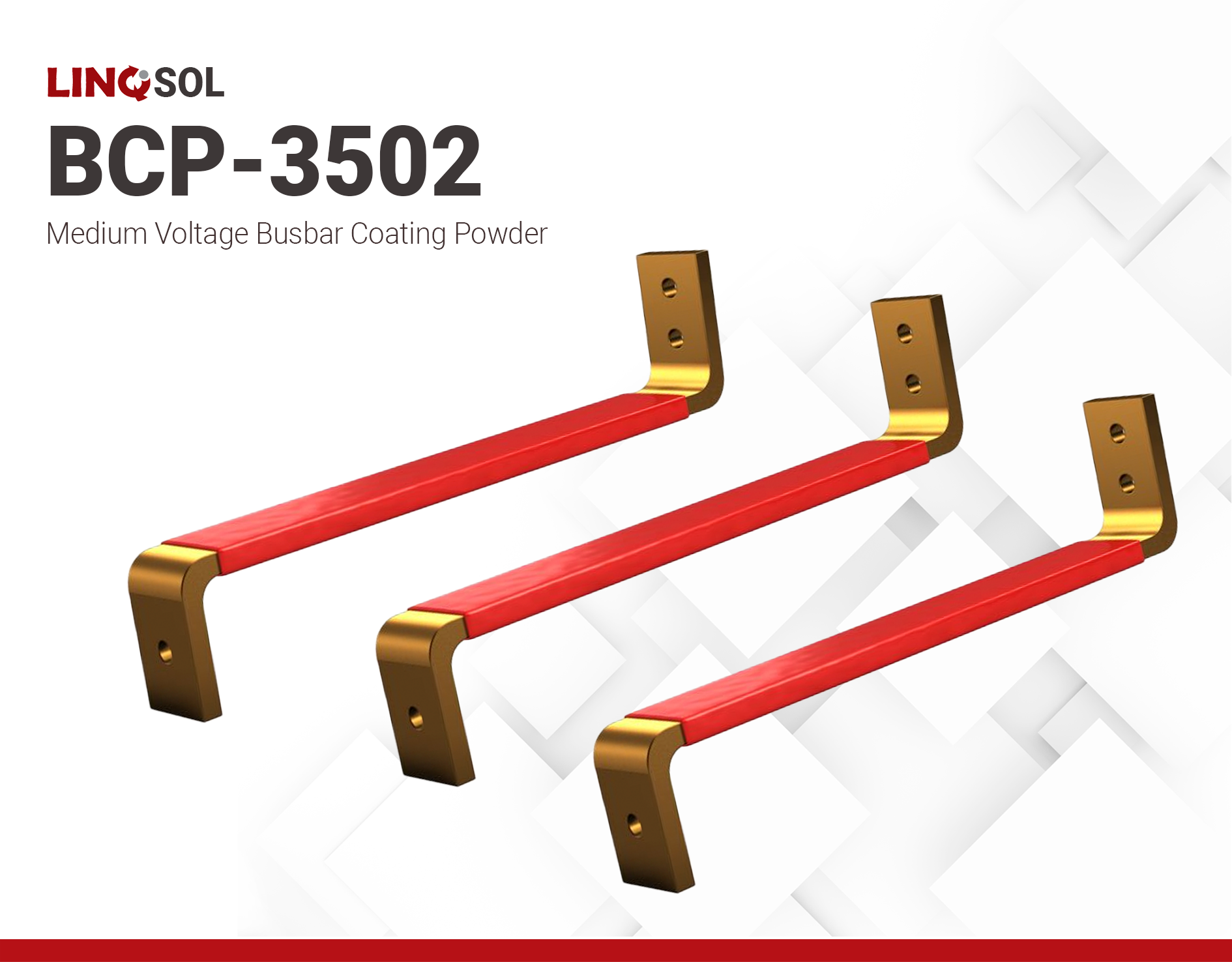BCP-3502 | 130℃ RTI Busbar Coating Powder
Harmonization Code : 3907.30.20 | Epoxide resins of a kind used for coating in powder form
Main features
- Black, red halogen-free epoxy coating powder
- Flexible use for low and medium voltage systems
- High heat resistance (RTI 130 °C) with UL94 V-0 rating
Product Description
LINQSOL BCP-3502 is a halogen-free epoxy powder coating engineered for superior electrical insulation in busbar systems. It offers rapid build-up and excellent coating uniformity across a broad thickness range, from 0.1 mm to 2.0 mm, making it a versatile solution for various electrical insulation needs. LINQSOL BCP-3502 is available in different colors. Contact us for more information.
Product Key Features
- High Thermal Endurance — Meets UL 746B Relative Thermal Index (RTI) of 130 °C for reliable performance at elevated temperatures.
- Superior Dielectric Strength — Provides exceptional electrical insulation properties.
- Flame Retardant — Achieves a UL94 V0 rating for enhanced safety.
- Can be applied using electrostatic spray or fluidized bed methods.
Product Key Applications
- Low-voltage busbar systems up to 600 V.
- Medium-voltage busbar applications up to 38 kV.
Technical Specifications
| General Properties | |||||
| Particle size (D50) | 45-60 um | ||||
| Thermal Properties | |||||
| UL 94 Rating UL 94 Rating Flammability rating classification. It determines how fast a material burns or extinguishes once it is ignited. HB: slow burning on a horizontal specimen; burning rate less than 76 mm/min for thickness less than 3 mm or burning stops before 100 mm V-2: burning stops within 30 seconds on a vertical specimen; drips of flaming particles are allowed. V-1: burning stops within 30 seconds on a vertical specimen; drips of particles allowed as long as they are not inflamed. V-0: burning stops within 10 seconds on a vertical specimen; drips of particles allowed as long as they are not inflamed. 5VB: burning stops within 60 seconds on a vertical specimen; no drips allowed; plaque specimens may develop a hole. 5VA: burning stops within 60 seconds on a vertical specimen; no drips allowed; plaque specimens may not develop a hole | V-0 | ||||
| |||||
| Electrical Properties | |||||
| Dielectric Strength Dielectric Strength Dielectric strength is measured in kV per mm and is calculated by the Breakdown voltage divided by the thickness of the tested material. Those two properties go hand in hand and while Breakdown voltage is always thickness dependent, dielectric strength is a general material property. As an example, the dielectric strength of Polyimide is 236 kV/mm. If we place 1mm of Polyimide between two electrodes, it will act as an insulator until the voltage between the electrodes reaches 236 kV. At this point it will start acting as a good conductor, causing sparks, potential punctures and current flow. | 45 kV/mm | ||||
| |||||
| Mechanical Properties | |||||
| |||||
| Chemical Properties | |||||
| Water Absorption | 0.3 % | ||||



